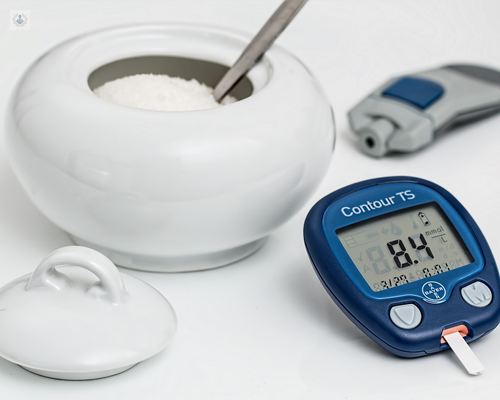diabetic foot
Written by:Diabetes is a disease that affects 15% of the population over 18 years of age, according to the study carried out by the Diabetes Foundation, an epidemic in today's world. One of its most serious complications is the diabetic foot, a highly frequent pathology, caused by the disorders that appear in the feet, mainly due to the alteration of the nerves and arteries.

From a normal foot, in diabetics there is a foot risk, due to a decrease in sensitivity (less defense) and a deformity (concentration of friction and load in a specific area) , accompanied by 50% of the cases due to a decrease in the supply of oxygen and nutrients (ischemia due to arterial obstruction). On this foot of risk and due to a small traumatism (generally the rubbing of the shoe), a wound is produced, which becomes chronic (ulcer). This ulcer can be complicated by infection and gangrene, causing the patient's disability and even amputation.
15% of diabetics have an ulcer on their feet, and 25% will present it throughout their lives. Two thirds of these ulcers will suffer an infection, half of them moderate or severe, which may require hospitalization. Approximately 15% of the ulcers will end in an amputation.
Diabetic Foot Diagnosis
The diagnosis is clinical, being fundamental to discern the existence or not of ischemia (arterial obstruction) and of infection, because it will modify in a very important way both the prognosis and the type of treatment. Ischemia can be detected by a vascular exploration and a Doppler ultrasound study.
Treatment of the Diabetic Foot
The treatment should include revascularization, usually by endovascular surgery if there is ischemia, debridement or resection of the necrotic and infected tissues, the discharge by means of insoles or adapted shoes if there is deformity and the cure of the ulcer.
But as in most pathologies, the most important thing is prevention. All diabetic, especially those with more than 5 years of evolution must undergo a screening of arterial pathology in the feet, to determine the presence of ischemia, deformity and insensitivity. With this, it has been possible to reduce the number of ulcers and amputations in this large group of patients. In addition, they should be aware of the potential severity of this disorder and perform a series of general foot care to prevent the occurrence of ulcers and improve their quality of life.


